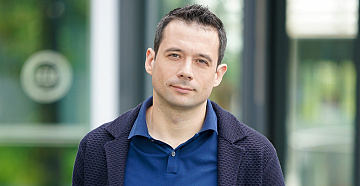WHAT WILL THE NEW YEAR BRING? NON-STANDARD TRENDS
Over the past few years, the IT market has been transforming especially rapidly, and new technologies have been fundamentally changing the rules for doing business. Offers from beautiful advertisement sometimes resemble passages from science fiction novels of the 1950s. Even the most stubborn sceptics are forced to admit that our world is really changing, and this is largely due to IT.
Roman Ostapchuk, Deputy CEO for Technical Development at STEP LOGIC
IT-News talked with representatives of the Russian IT market and found out whether it is worth waiting for miracles in 2019, or it will be a period of rhythmical evolution of the developments of previous years.
Trends 2018
Roman Ostapchuk, Deputy CEO for Technical Development at STEP LOGIC, named the consolidation and expansion of existing projects the most relevant IT trend in 2018. According to him, this often leads to a disproportionate increase in the complexity and duration of the works, which tightens the requirements for strategic planning and implementation of project activities, risk management, and plan-to-fact analysis. In addition, these challenges are just as dangerous for the medium and long-term financial stability of IT companies as are the more trivial problems associated with sanctions and currency rate volatility.
Forecasts 2019
According to the IDC forecast, by 2022, more than 60% of global GDP will be generated by digital technologies and solutions. What should we expect from the IT market in 2019?
According to Roman Ostapchuk (STEP LOGIC), IT trends will be directly related to one of the basic human needs — the desire to determine and monitor their surroundings. The rapid development of technologies and the increase in their share in the world around us lead to a growing demand for digital infrastructure monitoring tools – from the usual monitoring systems for logical IT objects to physical condition monitoring systems and performance indicators of robotic production equipment, he says.
"Although the graphs and principles of human interaction at a basic level are described by rather simple models (this is the well-known theory of the “six handshakes"), the task of controlling human interaction is not fully resolved. At the same time, models of much greater complexity are required to ensure the manageability of the information infrastructure, in the broad sense of the word. New approaches to addressing this issue can become extremely popular."
Source: IT-News
